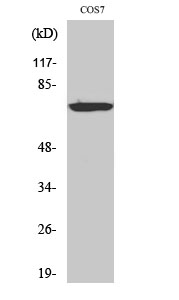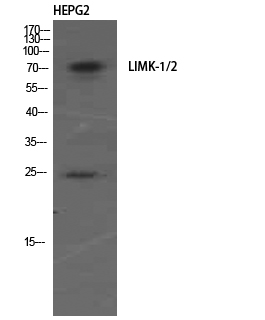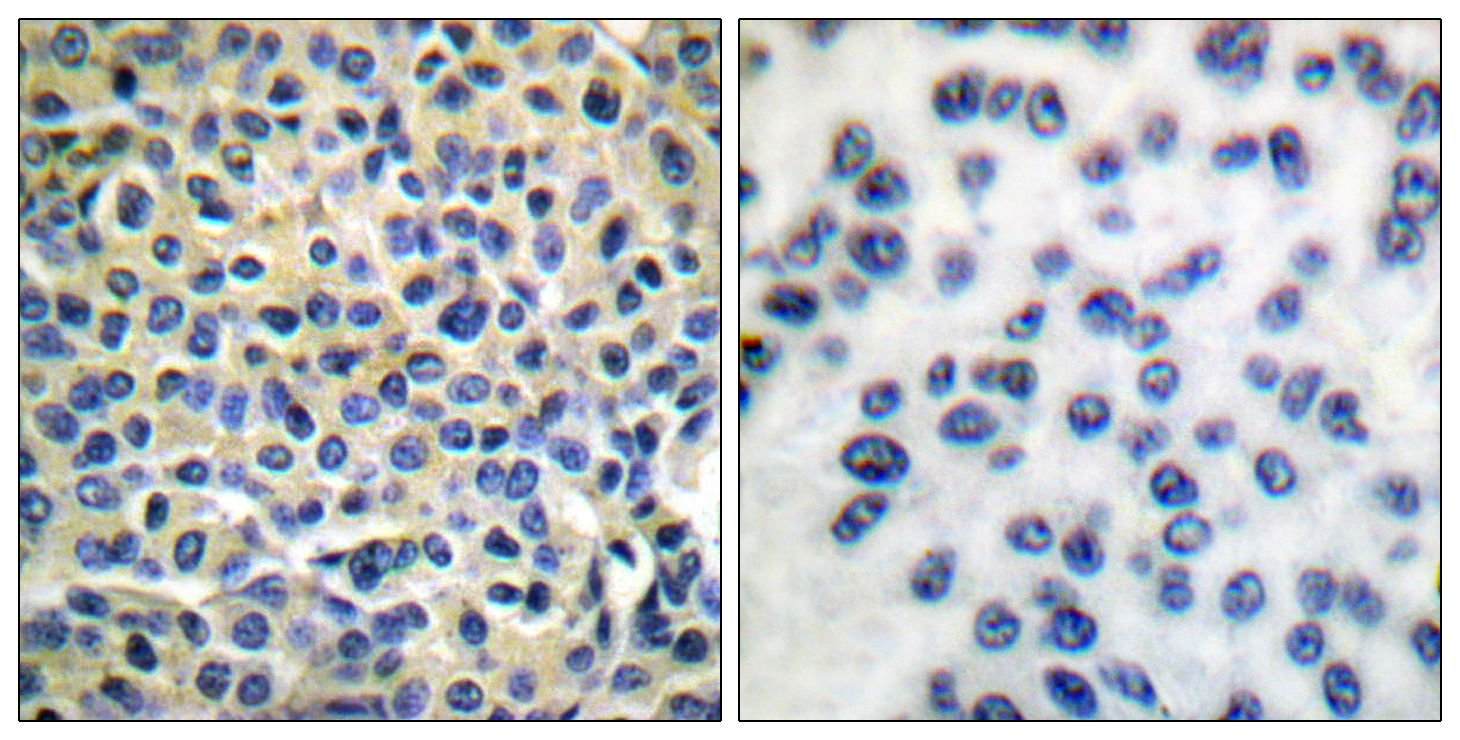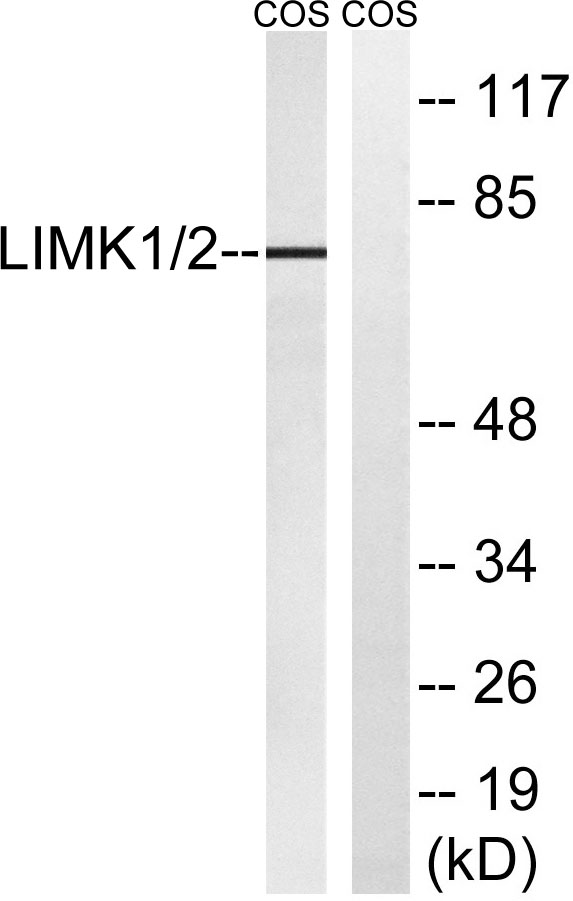LIMK-1/2 Polyclonal Antibody
- 货号:YT2564
- 应用:WB;IHC;IF;ELISA
- 种属:Human;Mouse;Rat;Monkey
- 简介:
- >>Axon guidance;>>Fc gamma R-mediated phagocytosis;>>Regulation of actin cytoskeleton;>>Yersinia infection;>>Human immunodeficiency virus 1 infection
- 蛋白名称:
- LIM domain kinase 1/LIM domain kinase 2
- 免疫原:
- The antiserum was produced against synthesized peptide derived from human LIMK1/2. AA range:481-530
- 特异性:
- LIMK-1/2 Polyclonal Antibody detects endogenous levels of LIMK-1/2 protein.
- 组成:
- Liquid in PBS containing 50% glycerol, 0.5% BSA and 0.02% sodium azide.
- 来源:
- Polyclonal, Rabbit,IgG
- 稀释:
- WB 1:500 - 1:2000. IHC 1:100 - 1:300. ELISA: 1:40000.. IF 1:50-200
- 纯化工艺:
- The antibody was affinity-purified from rabbit antiserum by affinity-chromatography using epitope-specific immunogen.
- 储存:
- -15°C to -25°C/1 year(Do not lower than -25°C)
- 其他名称:
- LIMK1;LIMK;LIM domain kinase 1;LIMK-1;LIMK2;LIM domain kinase 2;LIMK-2
- 背景:
- There are approximately 40 known eukaryotic LIM proteins, so named for the LIM domains they contain. LIM domains are highly conserved cysteine-rich structures containing 2 zinc fingers. Although zinc fingers usually function by binding to DNA or RNA, the LIM motif probably mediates protein-protein interactions. LIM kinase-1 and LIM kinase-2 belong to a small subfamily with a unique combination of 2 N-terminal LIM motifs and a C-terminal protein kinase domain. LIMK1 is a serine/threonine kinase that regulates actin polymerization via phosphorylation and inactivation of the actin binding factor cofilin. This protein is ubiquitously expressed during development and plays a role in many cellular processes associated with cytoskeletal structure. This protein also stimulates axon growth and may play a role in brain development. LIMK1 hemizygosity is implicated in the impaired visuospatial constructive cog
- 功能:
- catalytic activity:ATP + a protein = ADP + a phosphoprotein.,disease:Haploinsufficiency of LIMK1 may be the cause of certain cardiovascular and musculo-skeletal abnormalities observed in Williams-Beuren syndrome (WBS), a rare developmental disorder. It is a contiguous gene deletion syndrome involving genes from chromosome band 7q11.23.,function:Protein kinase which regulates actin filament dynamics. Phosphorylates and inactivates the actin binding/depolymerizing factor cofilin, thereby stabilizing the actin cytoskeleton. Isoform 3 has a dominant negative effect on actin cytoskeletal changes. May be involved in brain development.,PTM:Autophosphorylated.,PTM:Phosphorylated on serine and/or threonine residues by ROCK1. May be dephosphorylated and inactivated by SSH1.,similarity:Belongs to the protein kinase superfamily. TKL Ser/Thr protein kinase family.,similarity:Contains 1 PDZ (DHR) doma
- 细胞定位:
- Cytoplasm . Nucleus . Cytoplasm, cytoskeleton . Cell projection, lamellipodium . Predominantly found in the cytoplasm. Localizes in the lamellipodium in a CDC42BPA, CDC42BPB and FAM89B/LRAP25-dependent manner. .
- 组织表达:
- Highest expression in both adult and fetal nervous system. Detected ubiquitously throughout the different regions of adult brain, with highest levels in the cerebral cortex. Expressed to a lesser extent in heart and skeletal muscle.

- Western Blot analysis of various cells using LIMK-1/2 Polyclonal Antibody diluted at 1:500

- Western Blot analysis of HEPG2 using LIMK-1/2 Polyclonal Antibody. Antibody was diluted at 1:500

- Western Blot analysis of HEPG2 using LIMK-1/2 Polyclonal Antibody. Antibody was diluted at 1:500

- Immunohistochemistry analysis of paraffin-embedded human breast carcinoma tissue, using LIMK1/2 Antibody. The picture on the right is blocked with the synthesized peptide.

- Western blot analysis of lysates from COS7 cells, using LIMK1/2 Antibody. The lane on the right is blocked with the synthesized peptide.








